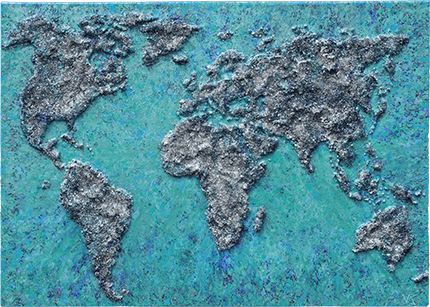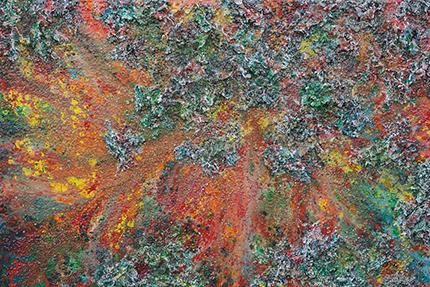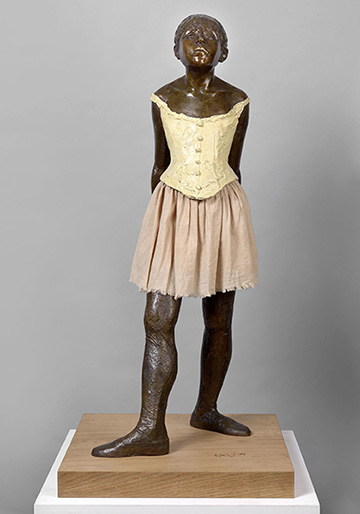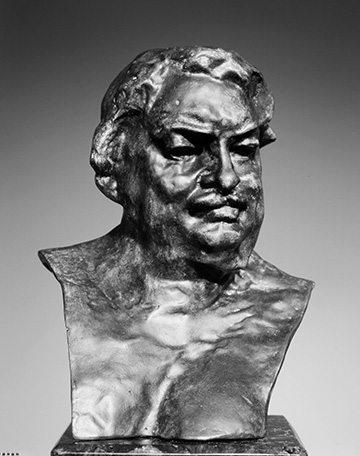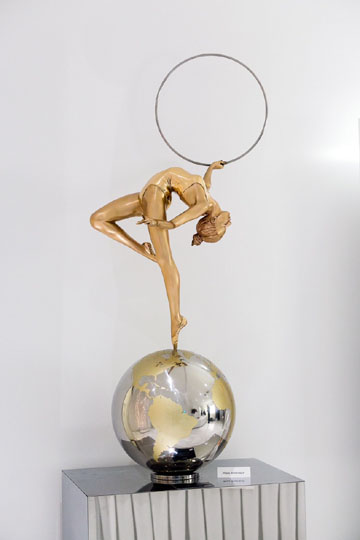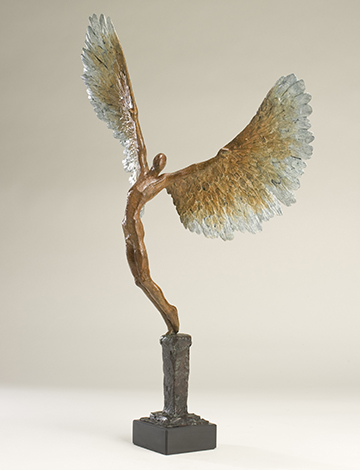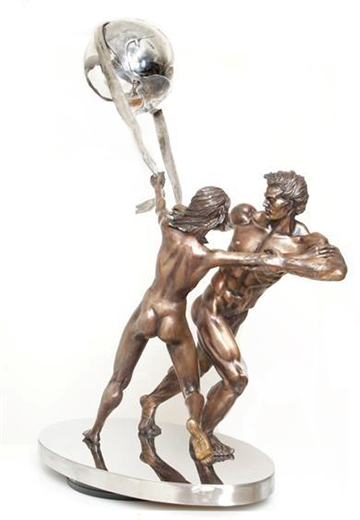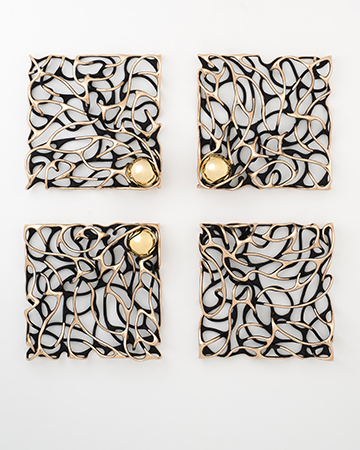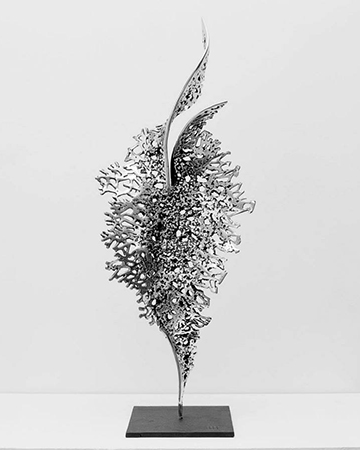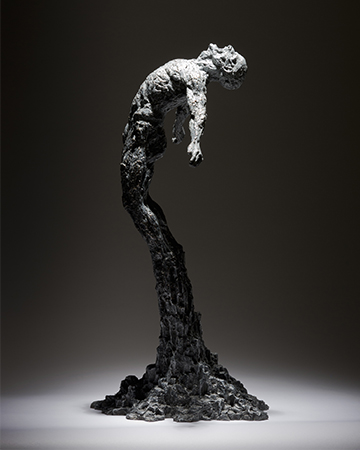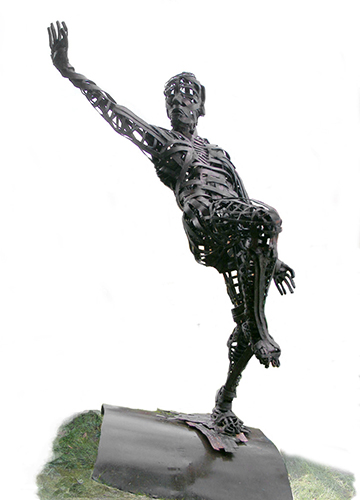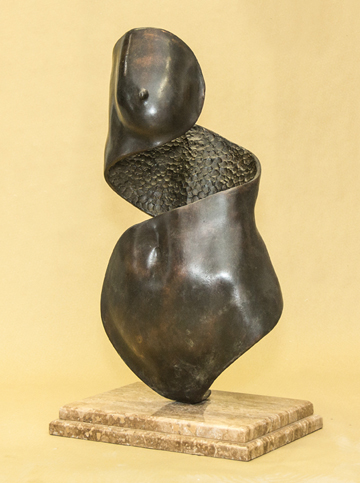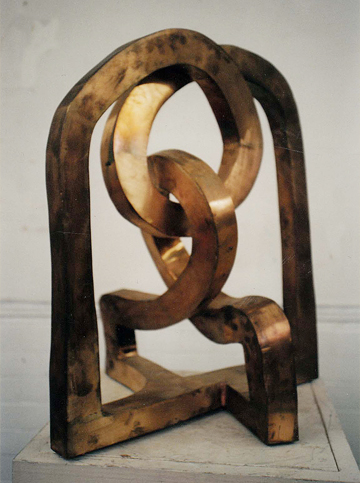 home
about
artists
exhibitions press
contact
purchase
home
about
artists
exhibitions press
contact
purchase |
|||||
|
EXHIBITIONS
The
History
of the Exhibitions:
2002,
2003,
2004,
2005,
2006,
2007,
2009,
2010,
2011,
2012,
2013,
2014,
2015,
2016,
2019,
2020,
2021,
2022,
2023,
2024,
2025,
2026, ... |
|||||
|
Current Online Exhibition
The Gallery Sculptors |
|||||
|
|
Edgar Degas (1834-1917) La Petite Danseuse de Quatorze Ans (The Little Dancer, Aged 14) Posthumous Cast Bronze sculpture with fabric tutu and satin ribbon, 99.1 cm high, from the 1998 Valsuani Foundry Edition of 34. Posthumous cast from the lifetime plaster, Florentine reddish-brown patina, stamped “A”, the year “1998”, “Cire Perdue” (lost wax), the word “reproduction” engraved on the sculpture under the tutu, as is required by French Law for all editions of more than twelve and the stamp of the Valsuani Foundry (“Bronze”) on the left foot. The wood base to which the bronze is attached is incised with a signature, “Degas”. There is also a 1997 Valsuani edition of the sculpture consisting of 12 bronzes, which together with the edition 1998 edition of 34, totals 46 bronzes, all of which were cast from a previously unknown plaster believed to date from no later than 1903.
In view of the popularity of the
sculpture The Little Dancer Aged Fourteen, the Degas Committee,
created in 2011, decided to contractually authorise its reduction
and to give birth to thirty eight individually stamped bronzes: |
||||
|
|
Posthumous Cast Auguste Rodin is generally recognized as the most important sculptor of the nineteenth century. His innovations in form and subject matter established his reputation as the first master of modern sculpture. Straying from nineteenth-century academic conventions, Rodin created his own sense of personal artistic expressions that focused on the vitality of the human spirit. His modelling techniques captured the movement and depth of emotion of his subjects by altering traditional poses and gestures. |
||||
|
|
Eleanor Cardozo Eleanor Cardozo was born in London in 1965 but spent her early childhood in Africa and Malaysia. She was classically trained in sculpture at the City and Guilds in London and in portraiture in Florence. Living and working in Geneva, her sculptures are beautiful and feminine. Her graceful bronzes were exhibited in London during the 2012 Olympics, from Heathrow Terminal 5 to Westminster Abbey and Buckingham Palace. The elegant glass Berkeley Square Business Centre now provides the perfect setting for ‘Poise’- a gymnast balancing between two circles of the globe and a hoop. With one balletic foot on the North Pole and a golden arm stretching out to touch the sun, precise equilibrium is achieved. As ever, the composition is excellently considered, from the triangle formed by the crook of the neck, bend in the knee and sharply arched spine, to the creased curve of a slipper mirrored in the smooth bronze lines of the leotard. Cardozo’s popular works can also be found in private collections and on public display throughout the world. |
||||
|
|
Nicola Godden Nicola Godden was born in 1959 in Germany and spent her childhood in countries including Kenya, Cyprus and Singapore. Her sculpture often begins life inspired by found natural objects, such as bone, flint or coral. Using wire to recreate the movement and flow of the raw material, she literally cements the idea in plaster or clay to cast later in bronze. Her skilled patinations cause the metal to appear cool or warm. Her ‘Icarus’ series could be made of wax and feathers; the ‘Eve’ torsos might be malachite or jade. Light reflects off the exceptionally smooth surfaces of the finished pieces, rendering them irresistible to the touch. Involving herself in every part of the casting process is extremely important to this artist who chooses bronze for its rich history and timeless quality. |
||||
|
|
Richard L.Minns The son of an Irish father and Jewish mother, Richard Minns was born on a Texan ranch in 1929. Using 21st century techniques with the anatomical precision of the Renaissance Old Masters and the expressionistic movement of French Impressionism, Minns has made a life-long study of the human anatomy. Combining considerable artistic talents with a personal background in bodybuilding, he transforms clay, marble and bronze into dynamic manifestations of the human condition. This artist has a great understanding of the detailed spectacle of muscles in motion, and from head to toe, every inch of these sculptures contain a whole spectrum of human emotion. Truly three-dimensional, these works must be viewed with 360º careful scrutiny. |
||||
|
|
Gianfranco Meggiato Born in Venice in 1963, Gianfranco Meggiato studied sculpture at the Instituto Statale d’Arte. Influenced directly by his homeland, the sculptures carry Venetian magic in their bronzed bones. Like things from outer-space imagined in precious metals, the moon-headed creatures peer out, glittery eyed from inside craters. Preoccupied with void rather than surface, the end effect is of energy bristling in shimmering clouds, or a comet freeze-framed as it blazes through the atmosphere. Meggiato’s serene minimalism causes us to stand back and marvel at the galvanised gold beauty of these planetary models. His work promotes a contemplative approach to life, asking us to listen to the still small voice in the centre of the storm. |
||||
|
|
Alfonso & Massimiliano Cacchiarelli Principi Massimiliano Cacchiarelli was born in 1970 in Macerata (MC) where he now lives and works. The artist’s philosophy is that meaning must be found through other forms than language. Ever the alchemist, he gives form to the imperceptible, recording primordial energy vibrations with his stainless steel creations. These twisted metallic honeycombs contain perfectly mirrored orbs; they resemble underwater corals and angelfish hiding among the silver weeds or scarab birds winged with intricate metal lacework. In order to experience them fully, the viewer must look past the visual symbols of structure and form, aware of something deeper. |
||||
|
|
Ian Edwards Ian Edwards was born in 1974 and brought up in Somerset where he first fell in love with the countryside that influences his work. The beauty of the natural world is evident in his sculptures, coupling earthy forest energy with the complexity of the human spirit. His works seem to be forming in front of our eyes, pulled roughly out of the clay or molten lava. Their dramatic postures and agonised expression seem like newborns exposed to light for the first time. His figures are clothed with texture of the trees outside, the bark dappled, knotted and peeling, returning to dust. As roots entwine with veins and muscles, twisted and sinewy, the subjects are straitjacketed by vines that snake up around their legs. We see them for the first time, like ‘men as trees, walking’. |
||||
|
|
Andy Cheese Andrew Cheese was born in Odstock, Hampshire, and graduated from Ravensbourne College of Art. Unafraid to experiment with his work, Cheese often uses a broad range of materials, including stone, resin, wood, steel and plaster. Taking a human figure as his starting point, he plays with the idea of revealing undercurrents of energy inherent within the static. His detailed studies into the movement of everything from dancers to kinetic machines, have led him to produce iconic sculptures such as ‘Breaking Through The Wall Of Words’, a dynamic bronze portrait cast from old printing press letters. |
||||
|
|
Jamie McCartney Jamie McCartney is a British artist who lives and works in Brighton. He trained at Hartford Art School (USA), graduating in 1991. Focused on notions of beauty and society’s obsession with the physical self, no subject is too controversial, nor any process or material off limits. McCartney pushes his subjects through to weird extremes- torsos like perfectly peeled orange skins curl up on their plinths, one legged seven-toed women reach their ideal weight in bronze. His five year project, The Great Wall of Vagina was accompanied by a book of women’s testimonies, speaking of the empowerment of his work. This feeling of liberation is widely shared by those who have encountered his art. |
||||
|
|
Oleg
Prokofiev (1928-1998) Oleg Prokofiev (1928-1998) was a prominent artist, sculptor and a poet. Son of the great Russian composer Sergei Prokofiev, he was born in Paris but at the age of seven returned with his parents to Moscow. He lived there for 35 years, becoming a member of a small group of artists defying Soviet socialist realism. His abstract meditative compositions created in the 60s are now exhibited at the Tretyakov Gallery, the national museum of Russian art in Moscow. A desire for artistic synthesis between painting and sculpture led Prokofiev to produce a whole series of works following the single line in loops and tangles, penetrating the space and reshaping it. These works are a continuation of themes already touched on by his post-impressionist work; form versus formlessness; the dynamics of creation and becoming, a simultaneous embodiment of order and chaos; an oscillation between complication and the need to destroy it. |
||||
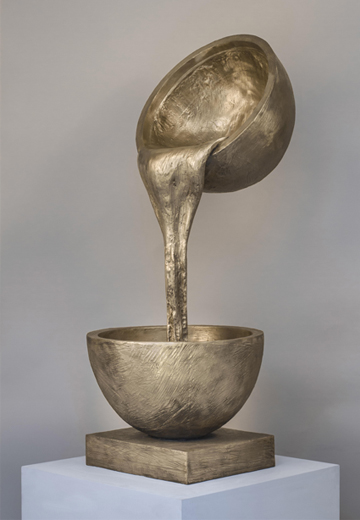
|
Roland Piché During his eight years of study Roland Piché was recognised as an independent new voice supported by Henry Moore, who he worked for part-time, by Francis Bacon and Bryan Robertson who through the New Generation Exhibition at the Whitechapel Gallery soon attracted the Marlborough Fine Art Galleries. Piché's work did not belong to any school of thought or group and his work has always been complex and contradictory. The influence and admiration of American art together with the inheritance of the humanist European traditions and the formal issues of Ancient Egyptian art in the context of ideas from the oriental attitudes and philosophy, made his evolution problematic and seemingly divided: the struggle and quest to resolve this is evident in most of his work. |
||||
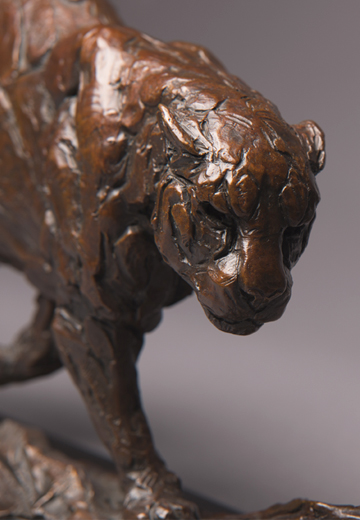
|
David Mayer David Mayer is a sculptor whose love of wildlife has encouraged him to choose animals as the subjects of his artwork. David's work has its roots in his childhood, which he spent in rural north Staffordshire close to the moorlands of the Peak District National Park. Walking, climbing and simply being in one of the UK’s most evocative landscapes left a lasting impression. Later, whilst working in this environment, his appreciation deepened with the opportunity to study wildlife and experience nature’s changing seasons and infinite moods. He draws on these experiences and his innate respect for and love of wild animals and the world’s wildernesses to create his work. |
||||
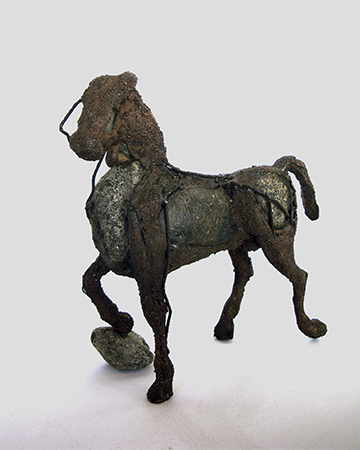
|
Palolo Valdés Pedro Pablo Valdés Bunster, well-known as Palolo Valdés, was born in Santiago, Chile on the 1st July 1956. He is a sculptor and painter. He has carried out three individual exhibitions of painting and more than twenty of sculpture in Santiago, New York, Paris, Athens and Madrid. He is an author of twenty monumental works for public and institutional spaces in Chile, Bolivia, Uruguay, United States and Madrid. Palolo Valdés is an sculptor whose work is giving life to wires and iron like structure of his sculptures, "filling up" the spaces with ceramics, stone, metal or draws resin. It increases the expression on his sculptures and acquires therefore an ancestral aspect. His work is inspired by pieces of the art history as well as mythical universal history personages, as well as horses and bulls. |
||||
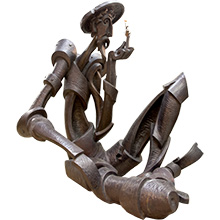
|
Nikolai Silis (1928 - 2018) was a Russian artist, draftsman and sculptor, and an influential voice in twentieth century Russian art. |
||||
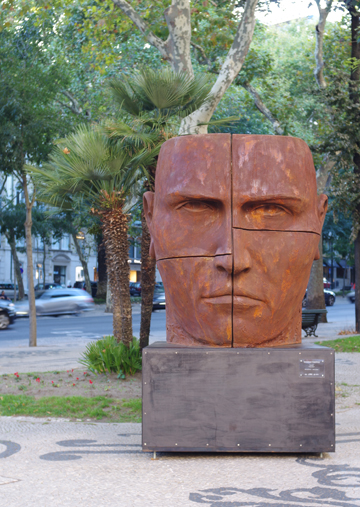 |
Monumental Sculptures We present the catalogue of the monumental sculptures of our sculptors which includes the works by: Sam Shendi Rogério Timóteo Eleanor Cardozo Unus Safardiar Ian Edwards Giuseppe Linardi Christian Balzano Marco Rotelli Gianfranco Meggiato Marialuisa Tadei Nikolai Silis |
||||
|
|
|||||
